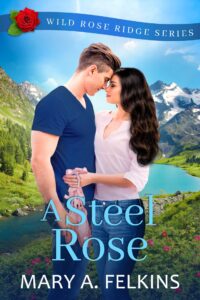by Mary A. Felkins, @MaryAFelkins

Each week, my craft partner and I spend upwards of three hours talking story and the meaty stuff of crafting a novel. That is, after personal and family updates, prayer concerns … and maybe occasional unleashed giggling over my undying love for Donny Osmond and her office supply and planner habit.
After we’ve discussed our current WIPs and attempted to untangle plot issues, we enter a time she refers to as, Read Aloud with Mary. This is when we deep dive into a craft book and highlight meaningful writer wisdom.
Among the craft books we’ve read was Intuitive Writing by Tiffany Yates Martin. She spares no ink emphasizing the need for every single scene, every single sentence—thus every single word—to give merit and support to the trajectory of the story (aka the core message) we’re trying to tell.
“Every single scene, every single line, everything in your manuscript should move the story forward.”
Every single one.
Imagine if our words, sentences, paragraphs and scenes were put on trial. Would a judge oust any of them from the courtroom?
Writer Defendant: “That scene is entertaining. It verges on hysterical.”
Editor Plaintiff: “Yes, but does it move the story forward?”
Writer Defendant: “It made me … and my sister … laugh out loud.”
Editor Plaintiff: (glower) “Did it create an obstacle that wound the tension tighter? Answer a question for the reader? Evoke emotion appropriate for the character arc? Provide essential information?”

Writer Defendant: (awkward smile) “It … um, not really.”
Editor Plaintiff: “Then it [word, sentence, paragraph, scene] has to go.”
During the pre-plotting Scrivener scribble phase, we’re writing in an unforced, creative flow state to build that brave first draft. It should be—dare I say—fun! But when we transition to the serious phase of building the story, we need to claim the ruthlessly brutal mind of a criminal judge.
The General Process of Putting Our Work on Trial
1. First draft: Equipped with our SEQs, allow ourselves the freedom to write unhindered.
2. Second draft: Here’s where we slip into our judge’s robe and consider the viability of each word, paragraph, and scene. If they disrespect the integrity of the story, out those “not-so-darling” aspects go. But no need to hand down the death sentence. Hang onto those particularly troublesome scenes. At some point, they might be redeemable. Sparing them in a separate folder minimizes the angst of doubt over whether or not we’ve judged accurately.
3. Third (and beyond) draft: Time to usher our work into the story courtroom. What should stay? What needs to be cut or maybe transferred elsewhere? Objective eyes from critique partners are helpful at this point.
4. Read the manuscript on digital. Our brains are wired for story. Weaknesses that weren’t apparent in Word become wildly obvious on digital. (Her wrist bangles jangled. Sheesh!) A sagging middle will disrupt the proceedings and beg our inner judge to order them out of the courtroom.
Each word builds the sentence that builds the paragraph that builds the scene that builds a gripping story that makes readers lose a night’s sleep. No matter how they (we) fake-whine on social media, readers (we) really do relish the loss of a night’s sleep over a book they (we) can’t put down.
With that, this court is adjourned.
A ballerina who won’t dance.
A smitten widower.
And the town that’s wooing them both.
Rose Stevens lost it all after one devastating night in Seattle. Five years later, she’s living her forsaken dream by training ballerina hopefuls at her studio in Wild Rose Ridge. It’s the only life she can bear. But can she hang onto it?
During his brief stay in the ridge, workaholic widower Jon Arrington must prove to his meddling in-laws he’s a great dad—even investing in his daughter’s dream to dance professionally. But it will require him to interact with Rose, the woman he watched perform years ago … and stupidly fell in love with.
If Jon’s daughter can pull off a flawless performance at the spring festival, it will put a stop to Rose’s landlord’s attempt to close her doors. But his impulsive decision to remove his daughter from the ballet corners an unprepared Rose to take her place.
The conundrum forces her to choose between the life she secretly longs for or the man who stirs memories of tragic loss. Or is the enchanting town of Wild Rose Ridge working its magic to give them a second chance at love?
Mary A. Felkins is an inspirational romance author whose novels include a happy smattering of hilarity, passion, and truth. She is a blogger at www.maryfelkins.com, contributor to writer’s blogs, and a member of ACFW, My Book Therapy, Novel Academy, and FHLCW (Faith Hope and Love Christian Writers) Upon introduction, if she favors your first or last name, expect to see it in one of her upcoming novels. Gardenias, Peanut M&Ms, happily ever afters & Jesus, please.


